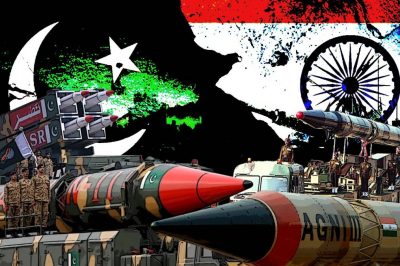South Asia’s security culture is continually changing. Most South Asian Republics faced existential security concerns from overseas during the Cold War. That, nevertheless, has drastically changed. As there is still a conflict between Pakistan and India, most security challenges to South Asian countries come from within.
As a result, this special issue should concentrate on two dimensions of South Asian security culture. First, we will look at the internal dangers that South Asian countries face. They are mainly focused on domestic concerns involving displaced people or ethnic minority concerns.
Secondly, the focus is on evaluating India’s and Pakistan’s continuous rivalry and examining many facets of the competition to determine how the conflict is handled and whether it can be resolved.
Non-security challenges such as non-state terrorism and religious extremism have presented severe concerns to regional governments’ internal security and stability and stability. South Asian governments are confronted with various intertwined classic and non-traditional security concerns that can influence global security.
Extra-regional powers like the United States, the United Kingdom, and other Western nations are actively involved in regional affairs to promote and protect their strategic interests. South Asia’s security and political dynamics are further complicated by such global engagement.
Strategies to Improve Security in South Asia
The following are some strategies for enhancing security in South Asia. One measure for improving South Asia’s security is to increase country security, stability, ownership, national boundary coherence, and freedom of navigation.
This will boost international and bilateral counterterrorism coordination in the region, preventing and countering radical extremist movements’ potential to function, raise funding, and recruit. It will also enhance the sovereignty of South Asian countries by improving their ability to withstand economic and political constraints and outside intervention in their domestic affairs.
Another strategy for improving South Asia’s security is to achieve self-reliance via sustainable social and economic development, excellent resource extraction management, more fair and equitable trade and commerce, and increasing economic independence.
South Asia will be capable of improving all populations’ health, education, and economic possibilities through these initiatives. More specifically, this can aid in the improvement of international standards and ecologically responsible procedures in economic and social development, such as infrastructure construction and financial support, as well as the growth of a resilient power in the regional market based progressively on clean, dependable energy generation.
The third strategy for improving South Asia’s security is to promote more inclusive, effective, and transparent governance and leadership based on global conventions and free of foreign influence. This approach will enhance and safeguard fundamental human rights by adhering to international norms, including protecting individual rights in the region.
This plan will also promote peaceful and democratic rivalry, competent and efficient political procedures, and administrations that oppose ethnic division. Finally, it will support the rule of law, governmental attentiveness, openness, accountability, and fighting corruption.
Supporting initiatives to advance and establish an equitable, peaceful resolution that terminates the war and guarantees that Pakistan and other South Asia countries are no longer a refuge for international terrorists is the fourth approach that will improve South Asia security.
This policy will encourage and engage nations in the region to assist South Asian countries in reaching a peaceful resolution to the war, facilitate local-level reconciliation of Taliban militants, and diminish disruptive terrorist proxies’ abilities. It will reinforce India’s and Pakistan’s economies and develop regional economic integration to secure commercial feasibility and improve ties with their neighbors.
Also Read: Navigating privacy and national security dynamics
Last, encouraging India’s evolution as a world influence and U.S. ally, which benefits security cooperation in the region, prosperity, and progress, is a strategy to strengthen security in South Asia. More specifically, the plan will enhance security and defense collaboration with India to assist India in providing security to the Indo-Pacific territory and beyond.
This will strengthen India’s competence and dedication to rules-based economic and social development in the SCA zone and beyond. Both governments’ nuclear weapons acquisitions are irreversible, yet maintaining a steady and effective deterrence at the minimum available level is crucial. Pakistan has often suggested that India create a “strategic constraint framework” to avoid a total confrontation that could end in nuclear annihilation.
Developing such a system requires improving diplomatic cooperation and increasing nuclear interaction. Pakistan and India should invest very little in developing nuclear weapons to minimize their dependence on atomic warheads and reduce the likelihood of nuclear usage.
The role of major nations, particularly the United States, has also been examined better to comprehend the region’s already precarious security position. Therefore, these initiatives will demand more guidance from the Secretary-General and greater cooperation between the UN and South Asia, as well as within the area itself, in the fight against terrorism. This will play a significant role throughout the personal lives of many South Asians, but its growing prominence in politics and public life poses a threat to progress.
***Author Moazam Ali is a Strategic Studies Student from the National Defense University, Islamabad.








